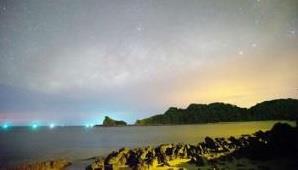July 2, 2013
WASHINGTON: Scientists have discovered that there are 60 billion potentially habitable planets in the Milky Way alone, twice the number previously thought.

These planets in the habitable zone of a parent star may have the ability to sustain liquid water on their surface, researchers say.
July 2, 2013
WASHINGTON: Scientists have discovered that there are 60 billion potentially habitable planets in the Milky Way alone, twice the number previously thought.

These planets in the habitable zone of a parent star may have the ability to sustain liquid water on their surface, researchers say.
A new study that calculates the influence of cloud behavior on climate doubles the number of potentially habitable planets orbiting red dwarfs, the most common type of stars in the universe.
This finding means that in the Milky Way galaxy alone, 60 billion planets may be orbiting red dwarf stars in the habitable zone, researchers say.
Researchers at the University of Chicago and Northwestern University based their study on rigorous computer simulations of cloud behavior on alien planets.
This cloud behavior dramatically expanded the estimated habitable zone of red dwarfs, which are much smaller and fainter than stars like the Sun.
Current data from NASA's Kepler Mission suggest there is approximately one Earth-size planet in the habitable zone of each red dwarf.
The study roughly doubles that estimate. It also suggests new ways for astronomers to test whether planets orbiting red dwarfs have cloud cover.
"Most of the planets in the Milky Way orbit red dwarfs," said Nicolas Cowan, a postdoctoral fellow at Northwestern's Center for Interdisciplinary Exploration and Research in Astrophysics.
"A thermostat that makes such planets more clement means we don't have to look as far to find a habitable planet," said Cowan.
Cowan, Dorian Abbot and Jun Yang, co-authors on the study provided astronomers with a means of verifying their conclusions with the James Webb Space Telescope.
The habitable zone refers to the space around a star where orbiting planets can maintain liquid water at their surface. The formula for calculating that zone has remained much the same for decades. But that approach largely neglects clouds, which exert a major climatic influence.
"Clouds cause warming, and they cause cooling on Earth," said Abbot, an assistant professor in geophysical sciences.
"They reflect sunlight to cool things off, and they absorb infrared radiation from the surface to make a greenhouse effect. That's part of what keeps the planet warm enough to sustain life," said Abbot.
A planet orbiting a star like the sun would have to complete an orbit approximately once a year to be far enough away to maintain water on its surface.
"If you're orbiting around a low-mass or dwarf star, you have to orbit about once a month, once every two months to receive the same amount of sunlight that we receive from the sun," Cowan said.
Courtesy: PTI
















































































































